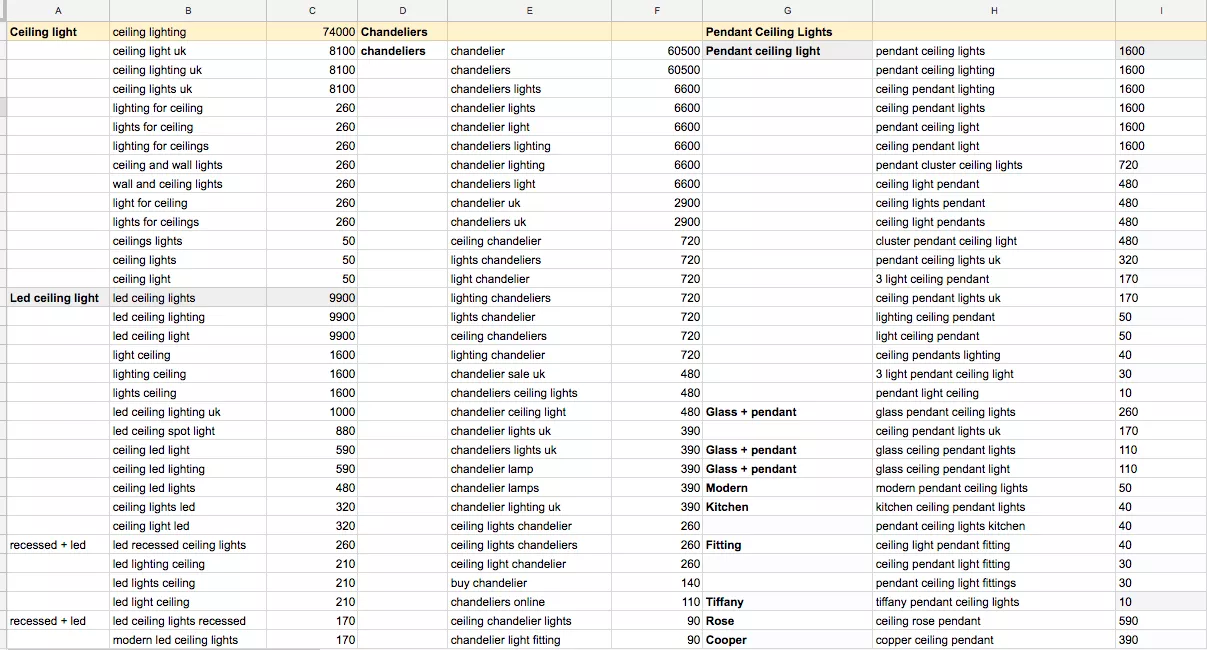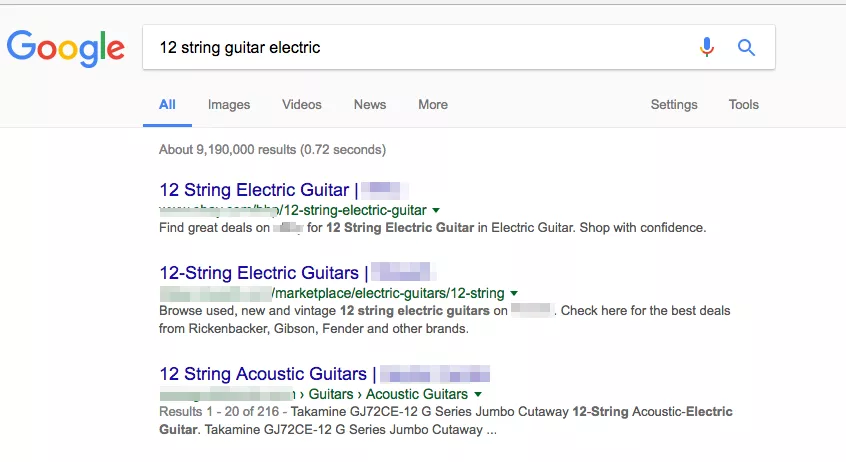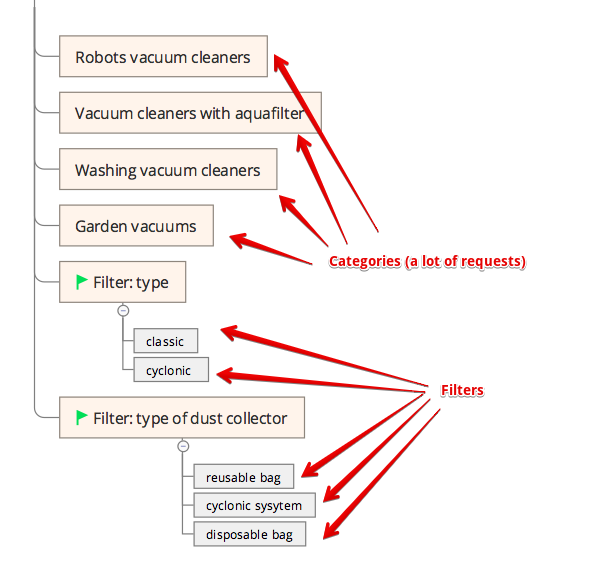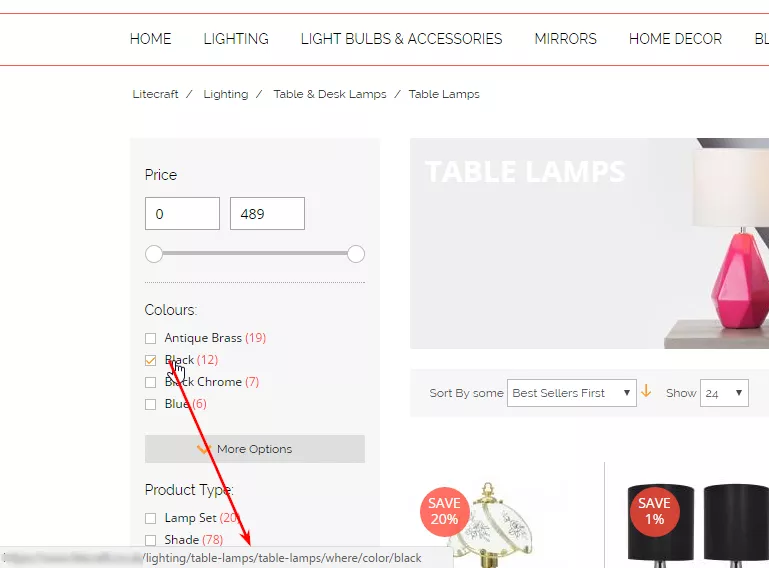Imagine: you have made a decision that further development of your project is impossible without SEO promotion. You have found a SEO specialist and provided him with all necessary accesses. You receive a long list of recommendations for implementation that relate to structure, text content and even design.
How to understand its real importance and what exactly SEO specialist does to optimize your website?
It doesn’t matter whether you conduct a website promotion campaign in Ukraine or USA: promotion’s procedure doesn’t change. There are no strict limitations and much depends on regional specifics. However, there are more than ten obligatory work stages.
1. Website, competitors and niche analysis
Relevant to the following types of websites:
- Online stores.
- SaaS sites.
- News sites.
- Online business card sites (not one-page websites).
- Online bulletin boards.
- Corporate websites.
- Forum websites.
When SEO specialist gains access to site analytics and search console (or adds the website himself), he starts to analyze products and services of the project, and gives general website estimation to identify what types of works have to be done in the first place.
On this particular stage, the strategy of promotion and detailed work plan are prepared.
What exactly does SEO specialist do?
- Conducts website visibility analysis by high, middle and low frequency keywords.
- Conducts analysis of competitors and niche leaders to understand strong sides of competitors to use this information in promotion strategy.
- Conducts analysis of niche leaders website’s structure and link profile.
- Points out queries that can be used for creating new pages on client’s websites.
- Conducts analysis of search results and general website analysis via Serpstat.
What for? To understand if website requires global changes. For example, the reform of CMS (Content Management System), mobile adaptation of a website, changing http protocol to https, etc.
An experienced specialist will notify about the necessity to implement certain website changes beforehand to clarify whether it can be realized on current CMS.
In addition, it helps to estimate budget for content, links, etc.
The best way is to implement global changes beforehand. Otherwise, within 3-4 months of technical audit implementation you will reach the deadlock facing with impossibility to optimize filter pages, to add meta tags or to add new categories.
To ensure this stage is executed with precision and foresight, consider our SEO Strategy Services. This service helps you build a cohesive, data-driven roadmap that aligns keyword research, technical planning, competitive insights, and business objectives into your SEO promotion stages.
2. Primary semantic core formation
Relevant to next types of websites:
- Online stores.
- SaaS sites.
- News sites.
- Online Business card sites (not one-page websites).
- Online Bulletin Boards.
- Corporate websites.
- Forum websites.
Now SEO specialist has promotion strategy, work plan, preliminary website analysis and niche leaders’ websites analysis. On this stage starts formation of primary semantic core: collecting keywords via Serpstat, Google Adwords Keyword Planner and other tools, clustering keywords to groups and checking frequency.
What for do we need semantic core?
- for website structure formation;
- for composing templates for meta information generation and composing manual meta tags (Title, Keywords, description, H1);
- For writing text content on landing pages;
- For interlinking;
- For Off-page SEO;
- For visibility analysis.
The semantic core can include from a few hundreds keywords to several hundreds thousands keywords (for online stores).
In this table there are less than 1% search requests for online store of lighting
The procedure of semantic core creation could be long and according to website size could be continued for a few months. That’s why usually semantic core is apportioned on sections and categories due to not slow down promotion and expand website structure at the same time with other works.
At this stage, you define your SEO goals, conduct keyword research, and map these keywords to your site's structure, taking into account your business model—whether you’re a B2B, e-commerce, or SaaS company.
If you’re running a SaaS company and want an SEO strategy that aligns with subscription-based growth and recurring-revenue goals, check out our SAAS SEO Services. They’re specifically designed to support SaaS businesses in building scalable, long-term SEO success.
3. Enhancing website structure formation
Relevant for the following types of websites:
- Online stores.
- SaaS sites (except of narrow-topical sites).
- News sites.
- Online business card sites (not one-page websites).
- Online bulletin boards.
- Corporate websites.
- Forum websites.
Search engines are constantly improving their algorithms to display more relevant pages in response to user requests. If you write in the search string “12 string guitar electric”, you will see the most relevant information at the top positions of the results page.
If you want to see your project in the top, you cannot do it without creating an expanded website structure. You have to create and optimize a separate landing page for every group of keywords.
However, it’s better to optimize product cards for super low-frequency requests because product cards will affect the category pages’ promotion taking away a part of inner pagerank.
A super low-frequency request is a request which was searched less than 5 times a month.
There is a tend to create categories for high frequency requests and to create filter pages and intersections of filter pages for middle and low frequency requests.
Where to find ideas for new landing page creation?
- SERP analysis;
- competitors analysis;
- internal search on the website;
- analysis of products/services range.
For big stores with outlets situated in different cities, for online bulletin boards, marketplaces and companies with branches, the number of landing pages in site structure is multiplied by the number of cities.
Important: the content displayed on those pages has to be unique.
It is a long-term process, and filter pages can be created even two years after technical audit implementation. However, the bulk of landing pages has to be created on this stage to produce a positive effect more rapidly.
4. On-page SEO task formation
Relevant to the following types of websites:
- Online stores.
- SaaS sites (except of narrow-topical sites).
- News sites.
- Online business card sites (not one-page websites).
- Online bulletin boards.
- Corporate websites.
- Forum websites.
On this stage, specialist identifies and fixes On-page SEO bugs, operates with landing pages, increasing their relevance to defined groups of keywords and deletes duplicate pages. These procedures require conducting a technical audit. Technical audit is a basis for writing a technical task for website optimization.
What has to be done (in order of priority):
- Configurating automatic formation of Title, Description, Keywords and H1 using templates for categories, product cards, filter pages, intersections of filter pages etc.
- URL structure formation (user-friendly URL formation).
- Filter pages optimization: creating rules for filter pages URL formation, meta information formation, filter links visibility.
- Growing server response speed and speed of downloading webpages.
- Deleting duplicates using permanent redirects, canonical addresses, noindex follow.
- Creating Xml sitemap.
- Multilingual settings (in case if you have a few lingual versions).
- Pagination optimization.
- Server requiere code and http-headers optimization.
- Markup for reviews and product cards.
5. Internal linking
Relevant to the following types of websites:
- Online stores.
- SaaS sites (except of narrow-topical sites).
- News sites.
- Online bulletin boards.
- Corporate websites.
- Forum websites.
Often the reason of bad site ranking is lack of inner pagerank for landing pages. What are we talking about?
It is important to not only create landing pages, but to organize internal linking in a way that will help users and robots find these pages. Otherwise, these created pages might not appear in search engine’s index.
As a rule, such problems occur with optimized filter pages: user can land to these pages choosing a filter, although search bot cannot see it.
On this stage, specialist also builds interlinking for menu category pages using developed scripts, where collected and clustered earlier keywords are downloaded. As a result, inner pagerank passes from pages with low competition (for instance, product cards or intersected filter pages) to pages with higher nesting level.
6. Content optimization
Relevant to the following types of websites:
- Online stores.
- SaaS sites (excluding narrow-topical sites).
- News sites.
- Online business card sites (not one-page websites).
- Online bulletin Boards.
- Corporate websites.
Optimizer manually forms unique meta-tags (Title, Description, Keywords) and H1 headers based on “long tail” requests for webpages where necessary. Moreover, for these landing pages text content is written. Texts include previously collected keywords with regard to search engines requirements (not spammy).
Texts impact site’s ranking by high frequency requests and display by “long tail”.
7. Crawl budget optimization
Relevant to the following types of websites:
- Online stores.
- SaaS sites where an opportunity to filter and sort search results is available.
- Online bulletin boards.
Site crawling budget is the number of URLs Googlebot can and wants to crawl at once.
Reading 2-3 articles about fitler or tags optimization, webmasters often create hundreds of useful filter pages which don’t have search requests at all or just a small amount. Furthermore they don’t close for robots intersections of filters pages from one cell (for example when two brands are selected) and four and more filter pages intersections. They don’t hide sorting pages (by price, by rating, by number of items on the page etc.). All aforementioned points are glaring mistakes.
As a result, search bot indexes only a part of filter pages and leaves the site. And even if you do everything correctly it could be a result of absence of some useful pages in the search index. Moreover, inner category pages pagerank will decrease.
It’s better to work with crawling budget when a specialist has a certain experience in this area. Only a good specialist can correctly disable indexing of useless filter pages, which were created only for user's convenience, limit useless filter pages crawling for bots and hide links leading to them.
8. Usability improvement
Relevant to the following types of websites:
- Online stores.
- SaaS sites.
- News sites.
- Online business card sites (not one-page websites).
- Online bulletin boards.
- Corporate websites.
- Forum websites.
Whether search algorithms take user behavior into account — the way customers interact with websites? Yes, they do.
SEO specialists tend to work with:
- users’ non-returning to search results;
- reducing bounce rate;
- increasing session duration.
Making site mobile friendly will substantially improve its visibility in mobile search results. Moreover, conversions from mobile devices will increase. Navigation simplifying will reduce bounce rate. Properly written content on “About us” page will increase trust and loyalty of your customers and search engines.
Mobile optimization is no longer optional—most searches happen on smartphones. To make sure your website performs effectively on mobile devices, explore Mobile SEO Services that help you maximize your organic reach.
9. Off-page SEO
What types of websites is it relevant to? To all types with high competition.
You can go without off-page SEO in the series of niches with low competition level, although off-page SEO is necessary. The more qualitative resources refer to your site, the more authority of your site grows up in eyes of search engines.
There are many parameters for selecting donors and profile link building. SEO specialists might use link building (leaving links on forums and Q/A services), guest posting (writing and publishing an article on someone else's website with active link to your site).
Besides, we always recommend site owners to write text content which internet users will refer to. This is the best type of links.
10. Conversion rate optimization
Relevant to the following types of websites:
- Online stores.
- SaaS sites.
- News sites.
- Online business card sites (not one-page websites).
- Online bulletin Boards.
- Corporate websites.
Conversions are not limited to sales. Conversion is getting someone to respond to your call-to-action, so it can be a subsсription to your email-newsletter or ordering your services.
This complex stage requires certain knowledge in design, usability, email marketing and even texts writing skills.
What specialist has to do first?
- Correct order forms.
- Add ways of communication through the website.
- Change the colors of page elements.
- Work with reviews.
- Configure trigger personal newsletters.
That is only a small part of work on conversion rate optimization.
11. Step-by-step page optimization
Relevant to following types of websites:
- Online stores.
- SaaS sites.
- News sites.
- Online bulletin boards.
- Corporate websites.
- Forum websites.
Taking page ranking by requests and traffic analysis as a basis, SEO specialist is constantly working on expanding site structure, edits texts, meta-tags, interlinking, website link profile etc. It’s a long process.
Constant search algorithms updating complicates promotion because there often is a necessity to change promotion strategy and improve site for customers and search engines.
Conclusion
It is possible to highlight 11 basic stages of SEO specialists’ work:
- Client’s website analysis, niche and competitors analysis. Strategy and work plan formation. Relevant to all types of websites.
- Collecting and clustering semantics, primary semantic core formation. Relevant to all types of websites.
- Enhancing site structure creation. Not relevant to some specific products and services.
- Technical website audit, on-page SEO task formation. Relevant to all types of websites.
- Internal linking, increasing of inner pagerank for landing pages. Relevant to all types of websites excluding online Business card sites and sites of specific products.
- Content optimization. Relevant to all types of websites.
- Working on crawling budget. Relevant to online stores, online bulletin boards, SaaS sites where an opportunity to filter and sort search results is available.
- Usability improvement. Relevant to all types of websites.
- Off-page SEO, working on link profile. Irrelevant for low-competition niches.
- Increasing conversion rate. Relevant to all types of websites eсxept forums.
- Step-by-step page optimization. Analysis-based implementation of technical tasks. Might be irrelevant for small online business card sites.
Almost all of these stages are not applicable for one-page websites.
Of course there are many nuances that were not included to this post. For instance, correct moving to other CMS, working on mobile version, etc. Soon new posts about it will appeared.
Related Articles
How to Set Up Consent Mode in GA4 on Your Website with Google Tag Manager
Let's explore how to properly integrate consent mode in GA4, configure it for effective data collection, and at the same time comply with GDPR and other legal regulations
Display Advertising Effectiveness Analysis: A Comprehensive Approach to Measuring Its Impact
In this article, I will explain why you shouldn’t underestimate display advertising and how to analyze its impact using Google Analytics 4
Generative Engine Optimization: What Businesses Get From Ranking in SearchGPT
Companies that master SearchGPT SEO and generative engine optimization will capture high-intent traffic from users seeking direct, authoritative answers







